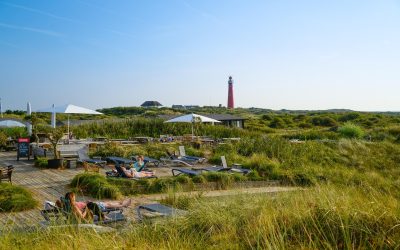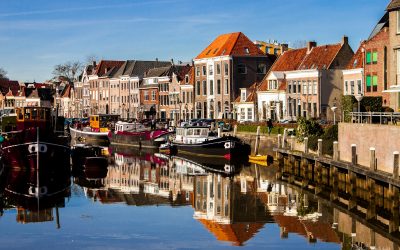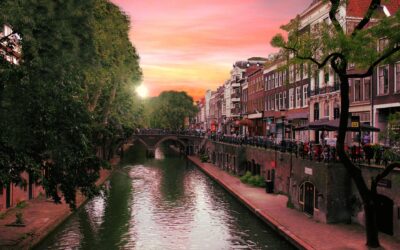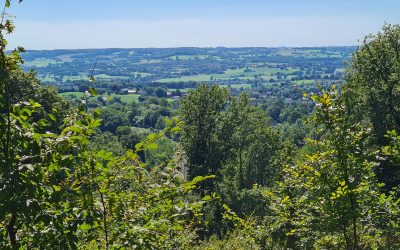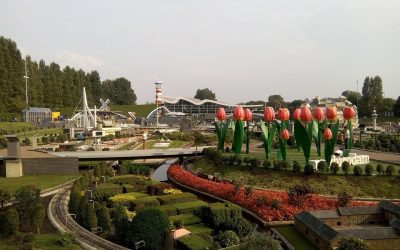Imagine a small, flat country full of bikes, canals, and cheese. That’s the Netherlands! In this Explain Like I’m 5 (ELI5) guide, you’ll learn the basics of this fascinating country in the simplest way possible — perfect if you’re planning your first trip.
The Netherlands in the Simplest Words
The Netherlands, often referred to as Holland, is a small, densely populated country located in Northwestern Europe. Known for its flat landscape, extensive canal systems, windmills, tulip fields, and cycling culture, the Netherlands has a rich history of trade, exploration, and innovation.
Its capital, Amsterdam, is famous for its artistic heritage and vibrant city life. The Netherlands is famous for its progressive social policies, strong economy, and role as a founding member of key international organizations like the European Union (EU) and NATO.
The Netherlands is like a big playground with water, windmills, flowers, and friendly people. It’s small, but full of surprises, and it’s one of the easiest places to travel in Europe.
Where is the Netherlands on the map?
The Netherlands is in Western Europe. It’s right next to Belgium and Germany, and just a short train ride from Paris, Brussels, or Berlin. Schiphol Airport is the international airport with flights from all over the world. Read more about Schiphol Airport in this article.
Where is the Netherlands Famous For? (ELI5 Style)
Bikes Everywhere
There are more bikes than people here! Cycling is the main way to get around. It is common to use the bike to work. The country has separate cycle lines almost everywhere.
Windmills and Water
The Dutch built windmills to pump water out of their low, flat land. Without them, much of the country would be underwater. Visit the Zaanse Schans to see real windmills.
Tulips and Cheese
Every spring, tulip fields turn into rainbows. And Dutch cheese is world famous — from Gouda to Edam. Plan a trip to Keukenhof gardens or a traditional cheese market in Alkmaar.
What’s the Difference Between Holland and the Netherlands?
Many people say “Holland” when they mean the whole country, but Holland is just two provinces inside the Netherlands.
The Netherlands or Holland
The terms “Netherlands” and “Holland” are often used interchangeably, but they refer to different things. The Netherlands is the official name of the country, which consists of 12 provinces. Holland, however, specifically refers to two provinces within the Netherlands: North Holland and South Holland.
These provinces are home to major cities like Amsterdam, Rotterdam, and The Hague, which have historically been centers of economic and political power. The prominence of these areas led to “Holland” becoming a common shorthand for the entire country, though it technically only represents a part of it.
The name: ‘Low Country’
The name “Netherlands” is derived from the Dutch word “Nederland,” which literally means “low country.” This name reflects the country’s unique geography, as much of its land lies at or below sea level. The Netherlands is part of a larger region historically referred to as the “Low Countries,” which also includes Belgium and Luxembourg.
These areas are characterized by flat terrain, extensive river deltas, and land that has been reclaimed from the sea through a sophisticated system of dikes and canals. The name emphasizes the country’s ongoing relationship with water management and its constant efforts to protect itself from flooding.
Fun Facts About the Netherlands (ELI5 Edition)
- The Dutch are the tallest people in the world.
- Almost everyone speaks English.
- There are more bikes than people!
Why You Should Visit the Netherlands
Friendly people, easy travel, colorful landscapes, and unforgettable experiences — that’s why you should visit.
Planning Your First Trip (Simple Tips)
Bring comfy shoes for walking, a jacket for the unpredictable weather, and don’t forget your camera. You’ll need it!
Ready to start?
The Dutch language
The language spoken in the Netherlands is called Dutch, a name that has historical roots. The term “Dutch” comes from the Old English word “Dūtsch,” which originally meant “people” or “nation” and was used to describe the Germanic-speaking peoples of the region. In the past, English speakers used “Dutch” to refer to both the people of the Netherlands and Germany. Over time, as the Netherlands became a distinct political and cultural entity, “Dutch” came to refer specifically to the language spoken in the Netherlands, while “German” was used for Germany. This linguistic distinction remains today, with “Dutch” being the official language of the Netherlands.
The difference between Dutch and Deutsch (German)
Dutch and Deutsch (German) are two distinct languages, though they share a common linguistic ancestry as part of the West Germanic language family. “Dutch” refers to the language spoken in the Netherlands and parts of Belgium, while “Deutsch” is the German word for the German language spoken in Germany, Austria, and parts of Switzerland.
Despite some similarities in vocabulary and grammar due to their shared roots, the two languages have developed separately over centuries. Dutch tends to be simpler in terms of word structure and grammar, while German is known for its complex case system and longer compound words. The terms “Dutch” and “Deutsch” can cause confusion for English speakers, but they represent two distinct languages and cultural identities.
The color orange (‘Oranje’)
The color orange is strongly tied to the Netherlands, particularly in sports, where it serves as the national team’s signature color. Orange represents the Dutch royal family, the House of Orange-Nassau, and has become a significant symbol of national identity.
In international sporting events, such as football, the Dutch teams wear orange jerseys, setting them apart and uniting fans under a common color. The choice of orange reflects a sense of togetherness and national spirit, and it is also embraced during major celebrations, signifying a connection to Dutch culture and tradition. This vibrant color has become an iconic representation of Dutch athletes on the global stage.
The infrastructure in the Netherlands
The infrastructure in the Netherlands is renowned for its efficiency, innovation, and extensive connectivity. One of the country’s standout features is its advanced transportation network, which includes an intricate system of roads, railways, and waterways. The Dutch rail system is among the most reliable in Europe, offering frequent services that connect major cities and towns. The extensive network of bike paths encourages cycling as a popular mode of transport, reflecting the country’s commitment to sustainable mobility.
In addition to road and rail networks, the Netherlands is famous for its impressive system of canals, which have historically played a vital role in transportation and trade. Major cities like Amsterdam and Rotterdam are interwoven with these waterways, facilitating both commercial shipping and recreational boating. The Port of Rotterdam, one of the largest and busiest ports in the world, serves as a crucial hub for international trade, linking Europe with global markets.
The Dutch are also pioneers in water management infrastructure, given their low-lying geography. The country employs an extensive system of dikes, dams, and pumps to protect against flooding and manage water levels. This innovative approach has made the Netherlands a global leader in flood defense technology and water resource management. Overall, the country’s infrastructure exemplifies a seamless integration of transportation, sustainability, and advanced engineering, ensuring the smooth functioning of daily life and economic activities.


